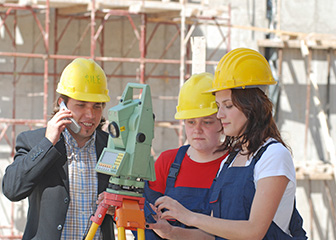Summary

| Quick Facts: Surveying and Mapping Technicians | |
|---|---|
|
$37,900 per year
$18.22 per hour |
|
| High school diploma or equivalent | |
| None | |
| Moderate-term on-the-job training | |
| 56,900 | |
| 16% (About as fast as average) | |
| 9,000 | |
What Surveying and Mapping Technicians Do
Surveying and mapping technicians assist surveyors and cartographers in collecting data and making maps of the earth’s surface. Surveying technicians visit sites to take measurements of the land. Mapping technicians use geographic data to create maps.
Work Environment
Surveying technicians work outside extensively and can be exposed to all types of weather. Mapping technicians work primarily indoors on computers. Most surveying and mapping technicians work for firms that provide engineering, surveying, and mapping services on a contract basis. State and local governments also employ these workers in highway and planning departments.
How to Become a Surveying or Mapping Technician
Surveying technicians usually need a high school diploma. However, mapping technicians often need formal education after high school to study advances in geographic information system (GIS) technology.
Pay
The median annual wage of surveying and mapping technicians was $37,900 in May 2010.
Job Outlook
Employment of surveying and mapping technicians is expected to grow 16 percent from 2010 to 2020, about as fast as the average for all occupations. Recent advancements in mapping technology have led to new uses for maps and a need for more of the data used to build maps.
Similar Occupations
Compare the job duties, education, job growth, and pay of surveying and mapping technicians with similar occupations.
O*NET
O*NET provides comprehensive information on key characteristics of workers and occupations.
Contacts for More Information
Learn more about surveying and mapping technicians by contacting these additional resources.






